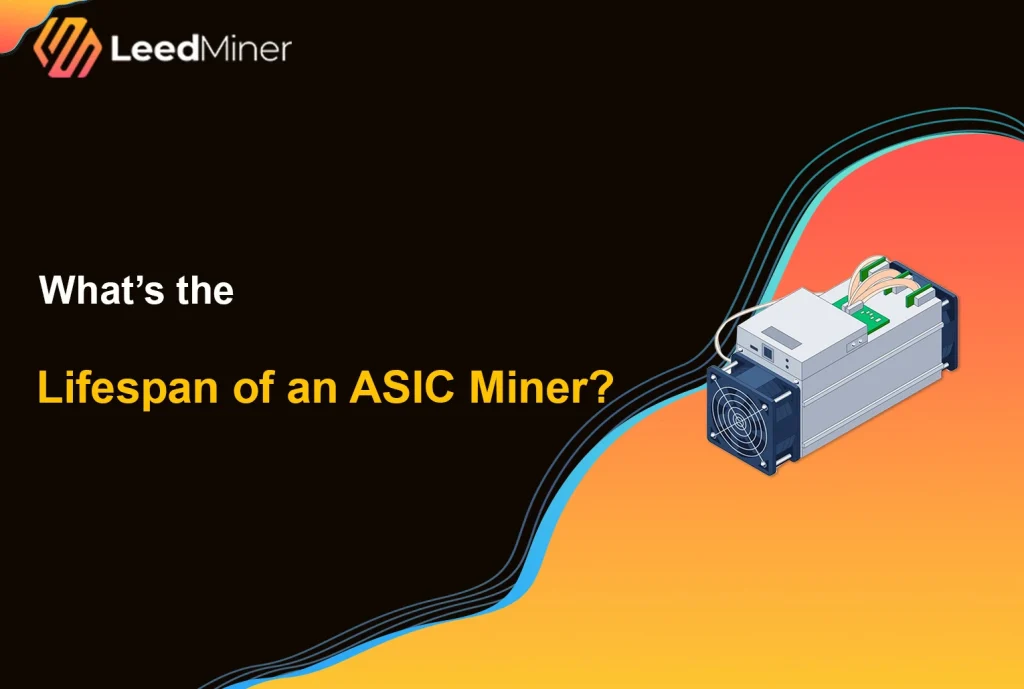What’s the Lifespan of an ASIC Miner ?
Mining101
- tagwu

SUMMARY
ASIC miners have revolutionized cryptocurrency mining by offering unmatched efficiency and performance. But like any specialized hardware, they don’t last forever. If you’re investing in an ASIC machine, understanding its lifespan is key to managing your expectations, budget, and long-term profitability. So, how long does an ASIC miner actually last?
Average Lifespan of an ASIC Miner
On average, an ASIC miner can last between 3 to 5 years under normal usage. However, some units may remain functional for over 7 years, depending on usage, maintenance, and environmental conditions.
But lifespan doesn’t only mean the hardware’s ability to turn on — it also refers to whether the machine remains profitable in a constantly evolving mining landscape.
Factors That Affect ASIC Miner Lifespan

1. Hardware Quality
Not all ASICs are created equal. Top-tier brands like Bitmain (Antminer), MicroBT (Whatsminer), and Canaan (Avalon) use better components and build standards, making their devices more durable than generic or low-cost models.
2. Operating Environment
ASICs are sensitive to heat, humidity, and dust. If miners are used in poorly ventilated areas or dusty environments without proper filtration, the risk of component failure increases significantly.
A cool, clean, and stable environment helps ASIC miners perform better and last longer.
3. Cooling Systems
Effective cooling is essential. Most ASICs are air-cooled, but advanced operations may use water cooling or immersion cooling, which can significantly extend lifespan by reducing thermal stress on components.
4. Firmware and Software Updates
Using official firmware and updating regularly can help prevent bugs, improve efficiency, and extend the miner’s life. However, unofficial firmware or improper updates may brick the machine or reduce stability.
5. Power Supply & Voltage Stability
Fluctuations in power can cause serious damage. Always use a high-quality PSU and consider surge protectors or voltage regulators to avoid damaging your machine during power spikes or outages.
Maintenance and Care
Routine maintenance is crucial. Here’s what experienced miners recommend:
- Dust cleaning every 1–3 months
- Fan checks and replacements as needed
- Monitor hashrate and error logs regularly
- Replace thermal paste if temperatures rise abnormally
Preventive care can add years to your ASIC’s life.
When Does a Miner Become “Obsolete”
A miner doesn’t need to break down to become obsolete. Even if it’s working perfectly, it may no longer be profitable if:
- Newer models with better efficiency are released
- The network difficulty increases
- Electricity costs make running the unit unviable
For example, many Antminer S9 models, once dominant in BTC mining, are now mostly retired or repurposed due to low efficiency.
What to Do with Old ASIC Miners

Just because your miner is past its prime doesn’t mean it’s useless:
- Sell to regions with cheaper electricity
- Mine altcoins that are still viable with older hardware
- Recycle or repurpose for educational use or testing
- Use as spare parts for other units
Some miners find creative ways to give their old machines a second life.
How to Maximize Your Miner’s Lifespan

If you want your ASIC miner to last as long as possible, follow these tips:
- Choose a cool and clean mining environment
- Use high-quality power supply units
- Regularly clean and maintain your machines
- Join reliable pools to ensure stable work input
- Avoid overclocking unless you're confident in thermal handling
Proper setup and regular monitoring make all the difference.
CONCLUSION
The typical ASIC miner lasts between 3 to 5 years, but with the right conditions and care, it can go beyond. However, lifespan and profitability are not the same. A well-maintained but unprofitable miner may not make financial sense to run.
To protect your investment, choose reliable models, maintain them regularly, and keep an eye on your power costs and network trends. Smart mining is not just about buying the right hardware — it's about managing it wisely.
FAQs on the Lifespan of an ASIC Miner
Can an ASIC miner last more than 5 years?
Yes, with proper maintenance and cooling, some ASIC miners can operate for over 5 years, though profitability may decline earlier.
What causes ASIC miners to fail early?
Overheating, dust buildup, power surges, and poor-quality components are common causes of early failure.
Is it worth keeping an old ASIC miner?
Only if it’s still profitable or useful for mining altcoins, resale, or educational/testing purposes.






